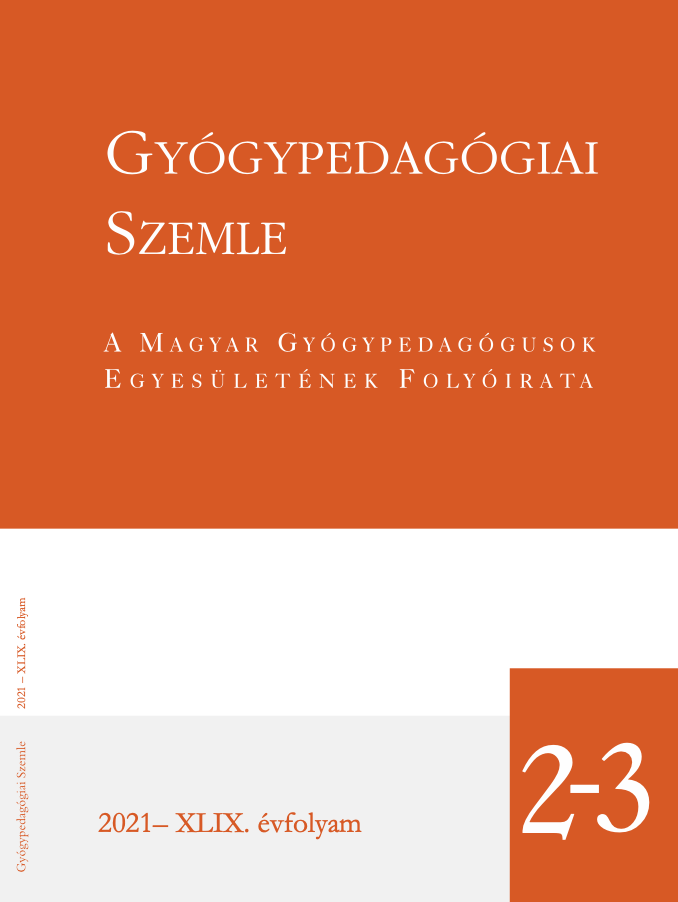The characteristics of the nonverbal communication forms between persons with intellectual disabilities living in a group home and their assistants
DOI:
https://doi.org/10.52092/gyosze.2021.2-3.6Keywords:
intellectual disability, adult, nonverbal communication, gestures, group homeAbstract
Background and goals: The communication processes of persons with intellectual disability are in many cases hindered (Radványi, 2007), hence a lot of nonverbal signs, which work as visual reassurance for the processing of verbalised information (Pease & Pease, 2006), gain significance. In intellectual disabilities, at the same time, perception, as well as the mode, the process and the intensity of information processing can differ from the typical (Radványi, 1994). Systematic observation and analysis of these processes can help understanding the nonverbal communication of persons with intellectual disabilities and what communication roles they uptake (Marton, 1995).
Method: In our case study we conducted a qualitative and quantitative analysis of the nonverbal communication of 4 members of a given group home at fixed time intervals – during the preparation and consumption of the collective dinner in the evenings – based on videotapes. We observed the interactions carried out between the inhabitants[1] targeted towards each other and towards two assistants[2] in two different communication styles. Since the practice of a „silent dinner” – during which no verbal communication is being performed – is incorporated in the traditions of the given group home, the characteristics of „talking” and „silent” events have been included as well.
Results: The illustrative gestures which confirm the verbal content in general (Wacha, 2011), were mainly used for self-expression by the inhabitants. Our findings – compared to the preceding studies / theories (Hódy 1981) – confirm that the so-called leading gestures are more likely to be used by the dominant party. Persons with intellectual disabilities who are having trouble in expressing themselves, can react with anxiety towards a situation filled with tension, which can manifest itself in forms of gestures as well. Interpreted in the light of Horányi's study discussing the participative model (Horányi, 2006), the illustrative gestures can be used as a tool by the inhabitants to overcome the wide gap between the two communicational subcultures of the inhabitants and their assistants.
Conclusions: The neurotypical persons who support persons with intellectual disabilities have a significant effect on the communication roles taken up by the supported persons, as well as on the content and dynamics of their interactions. In view of this, it seems indispensable that the supporting persons consciously have to move to the background and that situations of symmetrical communication should be initiated.
Keywords: intellectual disability, adult, nonverbal communication, gestures, group home
[1]Persons with intellectual disabilities living in the group home used as basis for our research.
[2]Those neurotypical members of the group home, who provide support for the persons with intellectual disabilities in their everyday situations.

